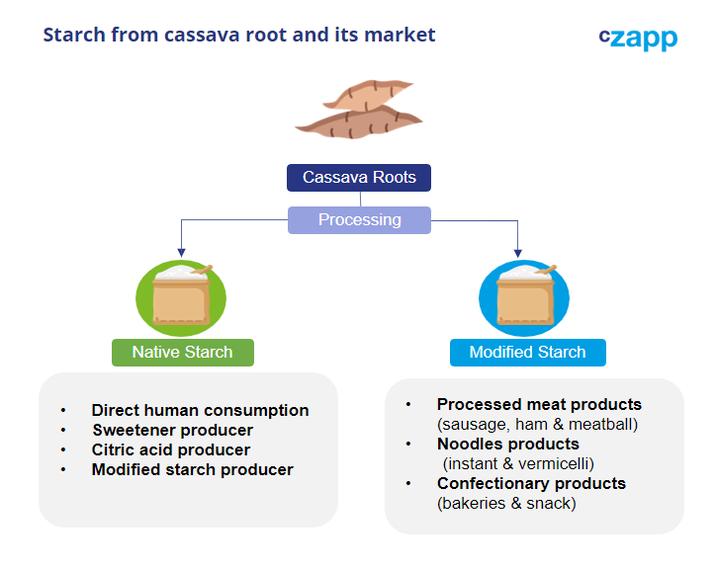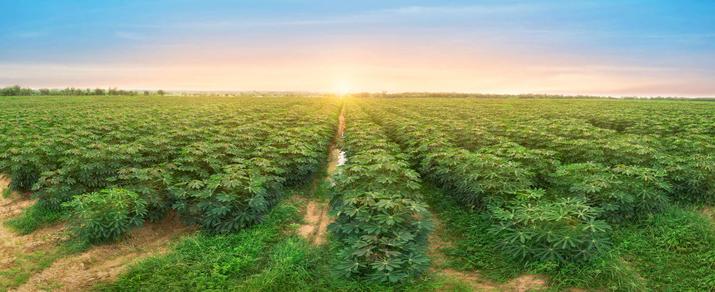Insight Focus
- Farmers are worried that cassava yields will be low this year.
- El Nino is the main reason for stunted root growth.
- Prices could keep rising in the short term.
Cassava Crop Tour: Northeast Region
Our team recently travelled to the northeast of Thailand to investigate cassava development.
Cassava is an important crop: it’s been earning farmers more than cane recently, meaning cane has been losing acreage to cassava.
It’s also used heavily in China for animal feed and as an ethanol feedstock. This means that its story resembles sugar cane, which is increasingly being used as a green energy feedstock.
It can also be used to make a range of starches for human consumption and industrial use.
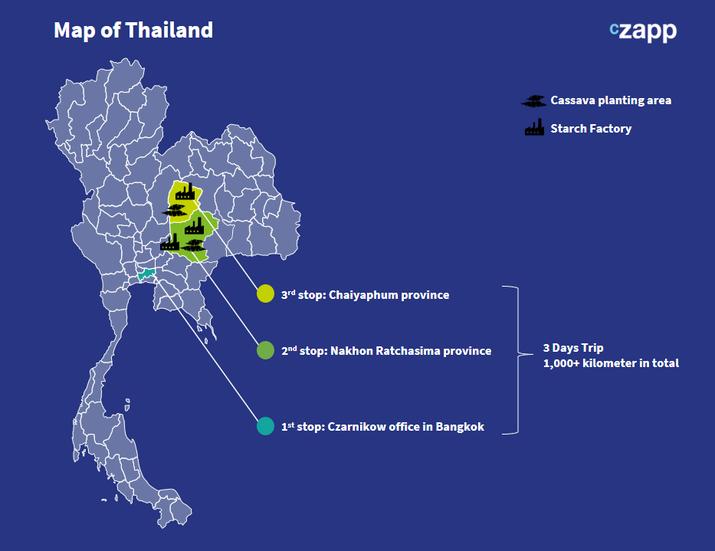
We travelled to Nakhon Ratchasima and Chaiyaphum provinces, both core cassava and cane growing regions in the Northeast of the country. The northeast accounts for more than 50% of Thai cassava plantations and more than half the starch factories in Thailand.
Day 1 – Nakhon Ratchasima province
The first stop is Sikio district, Nakhon Ratchasima province, 250 kilometres away from Bangkok.
With the help of sugar miller in that area, we had a chance to visit a farmer (middle of picture below) who grows cane and cassava, which he used to grow pineapples. He has more than 10 year’s expertise in agricultural industry.
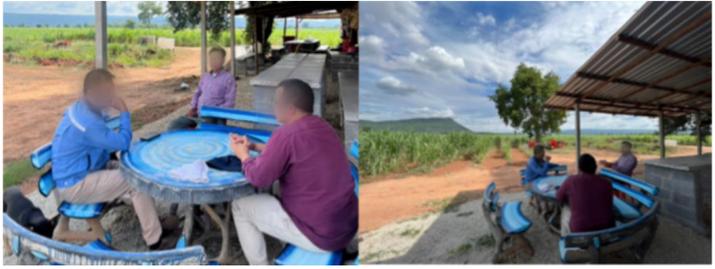
He is concerned that cassava yields for this coming season might not be as high as he’d first hoped. This is because of the delayed rainfall earlier this year and current below-average rains. Normally by July the crop would be better developed, but because of El Nino the weather is now very dry and rains are sporadic.
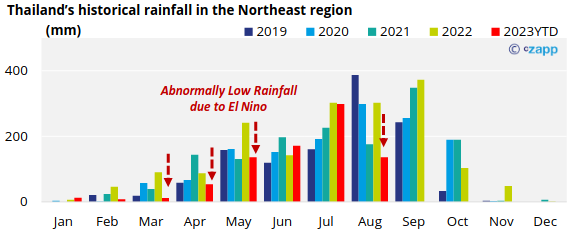
Occasionally heavy rainfall in July was good for cane but localised flooding damaged cassava roots, which rotted before they were harvested. Farmers had no choice but to harvest right away, but the roots are low quality and can only be sold at a cheap price.
Later, we went to the cassava plantation area that is near the factory.
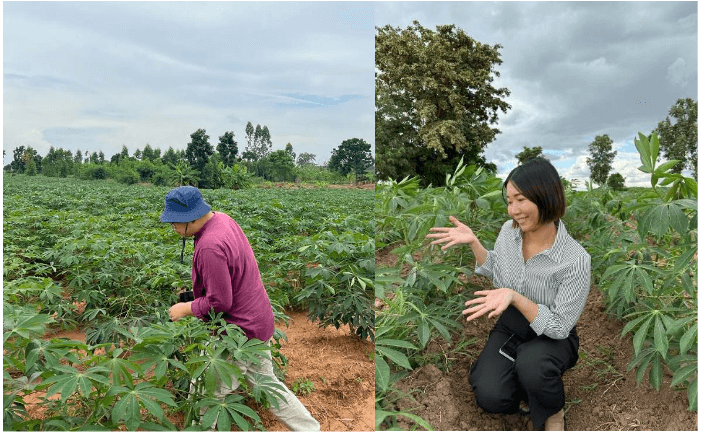
We then stayed in the city of Nakhon Ratchasima before continuing tour journey the next day.
Day 2 – Journey to Chaiyaphum province
We started our morning with a traditional breakfast of Dimsum, Khai kata and Mooping: fried egg and grilled pork.
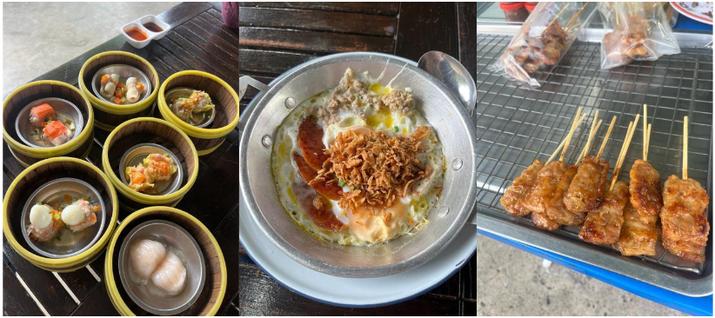
We drove from Nakhon Ratchasima to Chaiyaphum, about 200 kilometres. We visited another cassava factory located in Chaiyaphum. We talked to the factory manager and he told us that the crop development this year is still dependent on the weather.

But the weather remains dry due to the El Nino. This means that his crop is also underdeveloped, which will mean lower yields and a lower overall production.
Then we travelled to the cassava and cane planting area near to their factory.
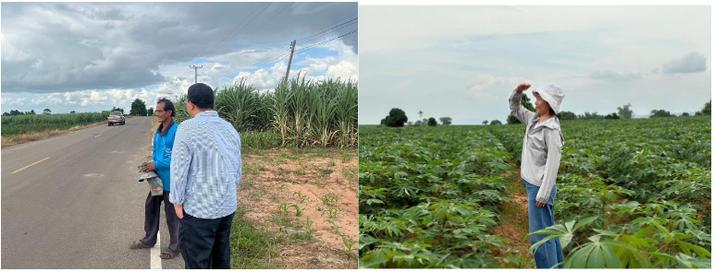
The farmers here mentioned that their friends (cassava and corn farmers) slightly increased their planted area this year because the cassava price was high and they thought the weather would be more favourable for these crops compared to cane. But they’ve still had problems with disease, pests and drought in some areas.

The pictures below show one such problems. The plants on the left have been infected with CMD, (cassava mosaic disease), which is spread by whitefly. This can interrupt plant’s growth causing a slow development, small roots, and lower yields.
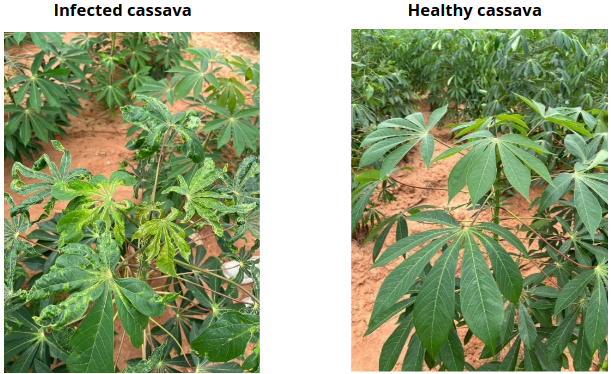
Day 3 – Back to Bangkok
On this day we returned to Bangkok.

We think Thailand is now facing a shortage of cassava roots as a matter of fact that there is a low rainfall this year, which is the impact of El Nino, affecting the growth development of cassava root, causing the size to become smaller than usual and thus led to lower yield and production.
We believe that the price of cassava products such as cassava roots and cassava starch could continue to increase up until the next crop season, which starts in November this year.
Historical Cassava Roots and Starch Prices
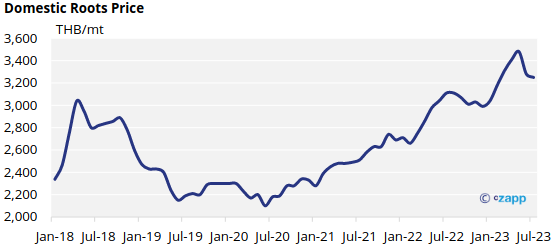
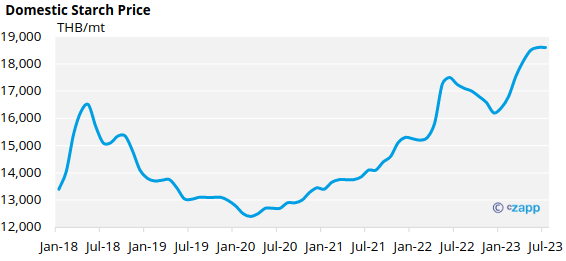
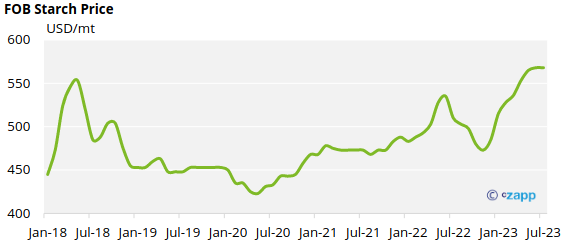
What is cassava?
Cassava is a drought-tolerant crop that is grown in over 100 countries, including Africa, America, and Asia. It is one of the world’s three most important economic crops, earning it the title “King of Starch.”
Cassava can be planted throughout Thailand, except for the southern region, which is a lowland area that is vulnerable to floods.
It can be processed into a native starch or modified starch because it is rich in starch content, often used as a raw material in the food industry.
Native starch is extracted from cassava plant roots through a natural process, yielding a fine, white, odorless powder. It’s rich in resistant amylose, offering dietary fiber benefits. Gluten-free and neutral in taste, it’s a great substitute for wheat flour, suitable for cold dishes due to its low gelatinization temperature. Besides food use, it’s also used in industries like paper and cosmetics.
Modified starch is altered chemically or physically for specific uses. It comes in forms like cationic, anionic, and nonionic, with higher gelatinization temperature than native starch. Enhanced stability allows it to endure freezing, making it a useful thickener, stabilizer, or emulsifier in baked goods, sauces, and more.
Besides being able to extract starch, glucose, citric acid, alcohol, glutamic acid, lysine, protein, and other substances useful in the manufacturing of food, alcohol, paper and textile. It also can be used as ethanol and animal feed.
